(Eng/Esp) “Puzzles and many colors" - Klonoa: Empire of Dreams (GBA) (Review)
[English]
Introduction:
During the 80's and 90's there was the possibility to try a wide variety of games for the various consoles that were available on the market by that time.
These electronic devices, for obvious reasons, had several limitations, but they still constituted a very interesting and attractive medium for many people willing to take their creativity to levels never before imagined.
It was in this way that we met the stupendous "Super Mario Bros." that was produced for the NES or Famicon in 1985, considered by much of the community as a fundamental basis for the origin of the platform genre, as we know it today.
However, the creative genius of Shigeru Miyamoto was not the only source of good ideas for video games at that time, as other enthusiasts appeared over time, mainly in Japan and then in different parts of the world.
This allowed titles with a very similar theme to the first Super Mario and its sequels to come to light, where the main character must go through side-scrolling scenarios, while overcoming various obstacles placed in the way through jumps, or direct interaction with certain special objects.
By then we already had proposals such as Sonic the Hedgehog titles for SEGA consoles, several games of the Adventure Island saga, Ghost 'n Goblins and even laid the foundations for what we know today as the Metroidvania genre. The latter thanks to the particular way in which the games of the Metroid and Castlevania sagas were played.
Within this curious context, the company Namco, remembered by many because they are responsible for everything related to the figure of the legendary Pacman, gave the opportunity to a proposal that would later become a real delight for the thousands of fans addicted to platform games.
The idea was to develop a title for Sony's popular PSX or PlayStation 1, starring an anthropomorphic creature with a certain resemblance to a cat.
The title in question was initially released in Japan in December 1997, being exported a year later to the rest of the world under the name "Klonoa: Door to Phantomile" and focuses on the adventures of "Klonoa", a charismatic and kind-hearted hero who is said to be a kind of "dream traveler".
The reception of the game seems to have been quite good in the land of the rising sun, because in addition to having given rise to a great franchise of the same name, it was also recreated to work and take advantage of the capabilities of the Nintendo Wii and its most recent successor, the Nintendo Switch.
However, "Klonoa: Door to Phantomile" is by far not the only outstanding installment of the entire franchise, because there was one in which its developers decided to take things to a very different level, but preserving the basic features that made the saga famous. This is how they managed to create a Klonoa game much more addictive and interesting than its predecessors.
This time no Sony system was chosen to support it, since the new proposal was specially designed to work in the environment of the versatile, and by then new, Game Boy Advance. A portable console more than ideal for the type of game that the team behind Klonoa wanted to offer consumers.
It was first released in July 2001 in an initial release where only the Japanese market was taken into account, at least until the people at Infogrames took it to the United States and several countries on the European continent.
The team in charge of its development is well known as Now Production or Nowpro, a studio based in Osaka that had already collaborated with large companies in the videogame industry over the years.
The game was published in the west under the name "Klonoa: Empire of Dreams" and in it we can control Klonoa, while we go through various colorful scenarios solving puzzles. These involve specific objects and even enemies that appear through portals.
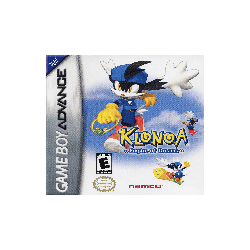
source of the images used for the gif
Gameplay:
For this our hero Klonoa has a special ability that allows him to make big jumps and use his long ears to float a little in the air. This way he can better avoid obstacles and reach areas that would be out of reach of other characters from other franchises.
Aside from the above, Klonoa also has a gadget known as the "Wind Ring", which is supposed to be a magic ring or something like that capable of manipulating the air and allowing Klonoa to grab heavy objects, as well as capture his enemies.
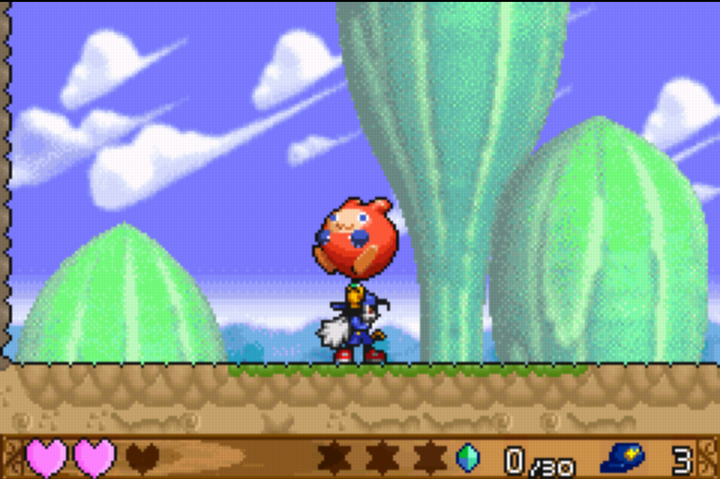
In this way he can carry them with him to later use them as a boosting element to be able to jump higher than usual, or throw them as a weapon.
On the other hand, most of the puzzles require the use of things such as boxes or grabbing one or several consecutive enemies, while other elements such as floating red balloons, ropes and various types of platforms appear.
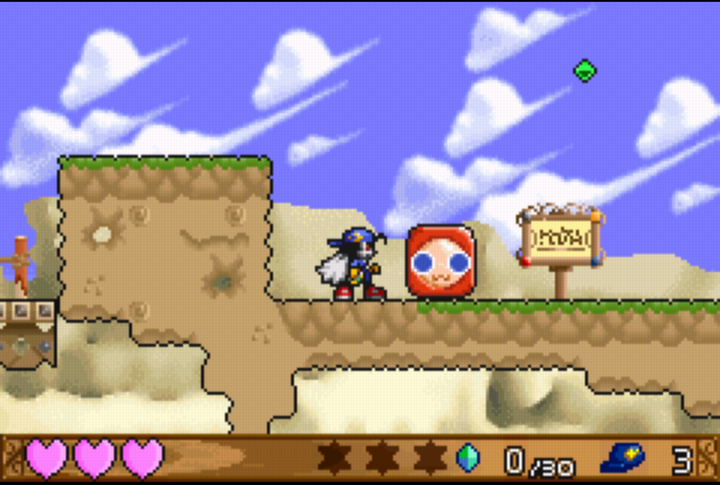
You can also collect lives and crystals which are like coins, apart from keys which are used exclusively to open doors that allow the player to unlock other areas to explore and continue solving puzzles or to collect hidden items.
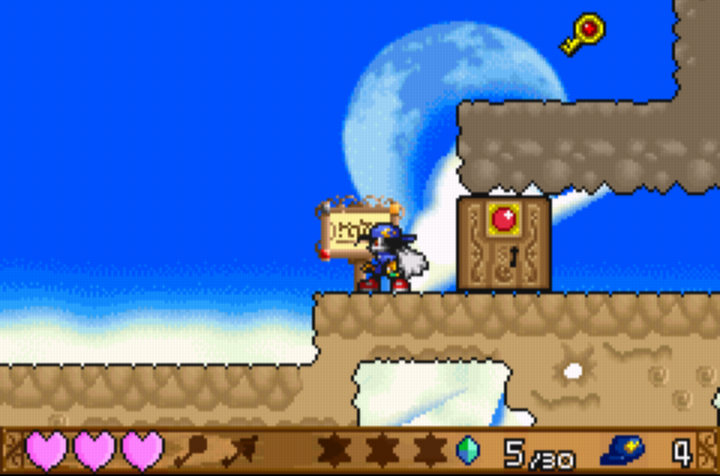
On the other hand, the stars are the main reward once the puzzles have been properly solved, so that by getting the three stars it will be possible to open a special golden door. Through it we will be allowed to advance to the next stage.
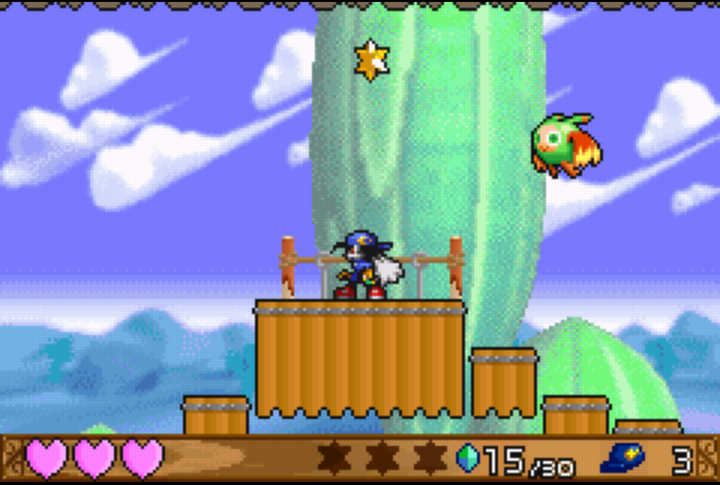
But before going through these doors it is very important to check if we had already collected all the items in the current stage, to avoid having to play it again later.

By the way, it is an advantage that the game has three save slots and an internal battery, so you can rest easy knowing that when you turn off and turn on your console you can continue the game from where you left off. In addition, you can lend the cartridge to a family member or friend who also wants to try it so they can save their progress.
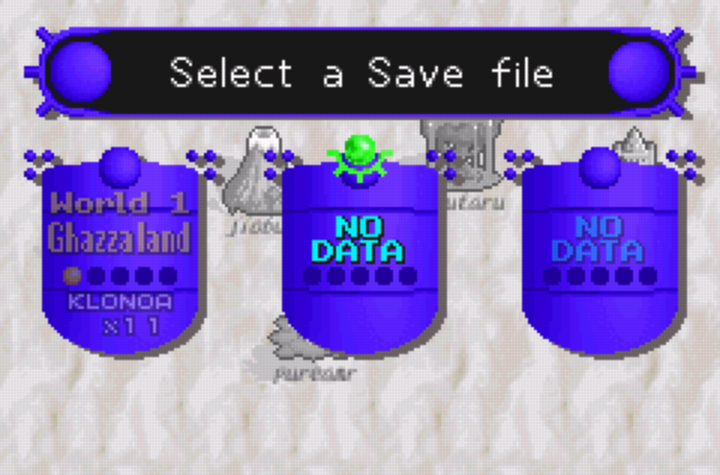
As for the story, everything can be summarized in that Klonoa was sleeping peacefully and suddenly appears in a different world where it is forbidden to dream, as it was decided by the evil emperor Jilius, who suffers from insomnia.
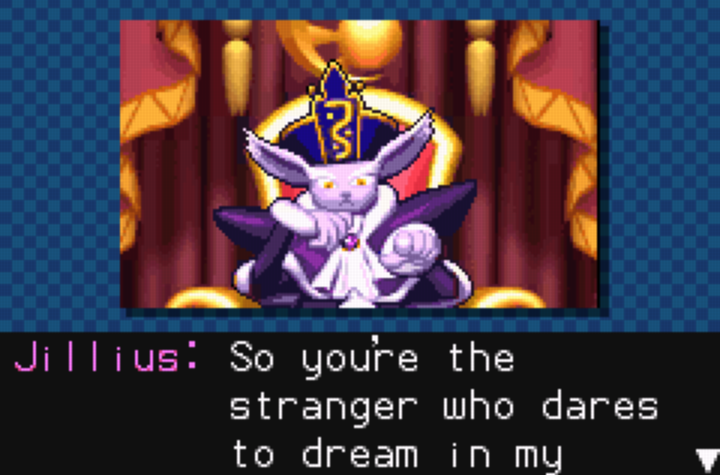
As punishment for his insolence and refusal to obey, Klonoa is sent to kill several monsters with his friend Huepow. For this reason, both of them must travel through the entire empire until they achieve their new objective.
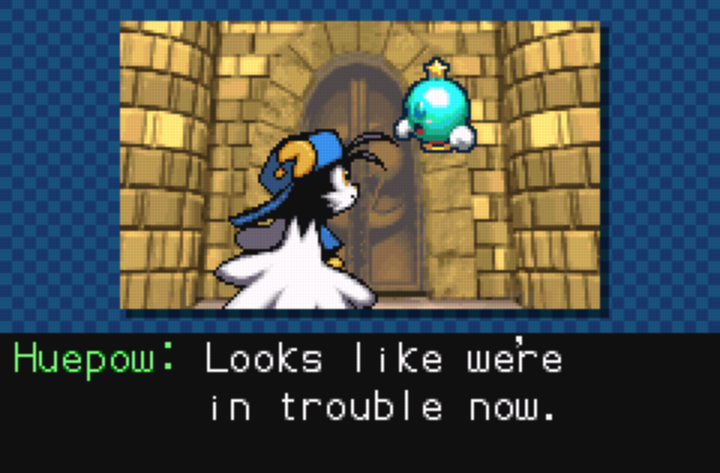
After the animated cinematics at the beginning, we are shown what the main map is. There it is possible to see that there are 5 different places to explore, the first of them being "Ghazzaland", better known as the "City of Fights" where only brute force is synonymous of respect.

Upon choosing this area, a cinematic is then played where our hero is greeted by several locals, who proceed to hit him as a form of greeting, while indicating where the monster that must be defeated is located.
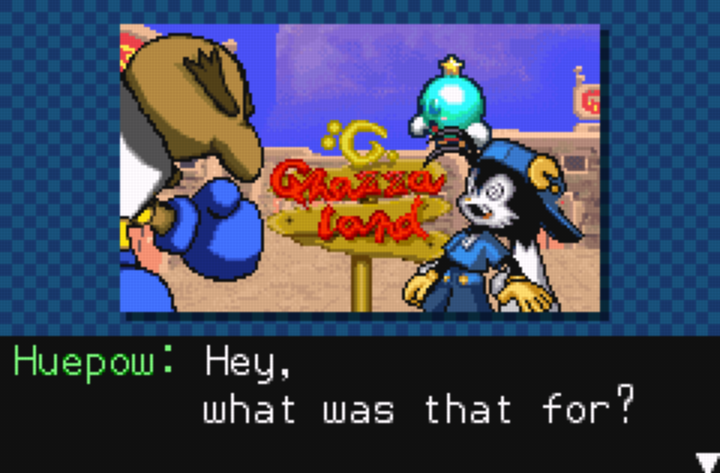
Then, another map appears showing the "visions" or scenarios that we must overcome, in order to face the boss of the level. These same scenarios contain puzzles that gradually increase in difficulty, which means that we will be thinking for a while until we figure out the best way to solve them.
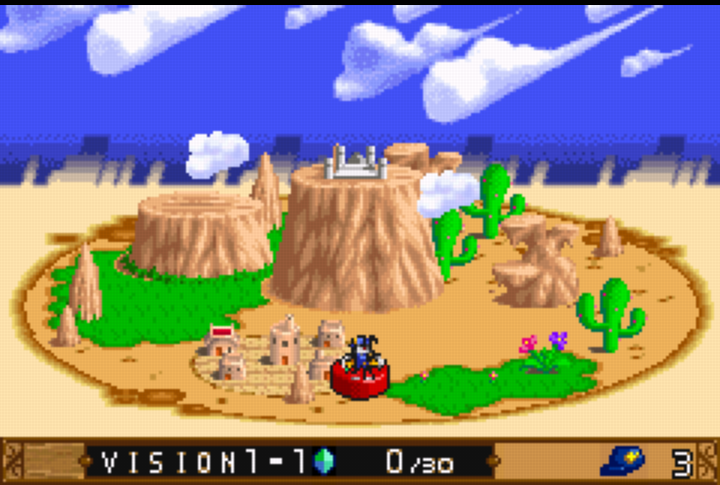
At the bottom right of the screen are three heart containers. These are emptied every time Klonoa makes direct contact with an enemy and suffers damage, although the same happens if you touch the spikes that appear on the floor of some scenarios.
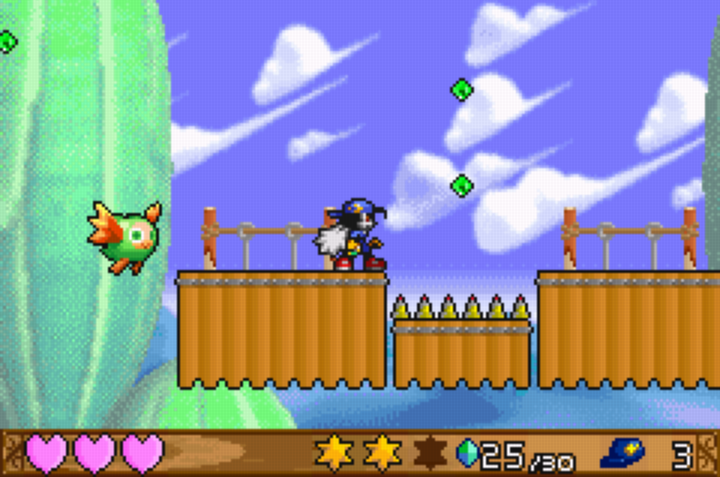
To refill these heart containers, you just have to find the heart-shaped items, which are very scarce.
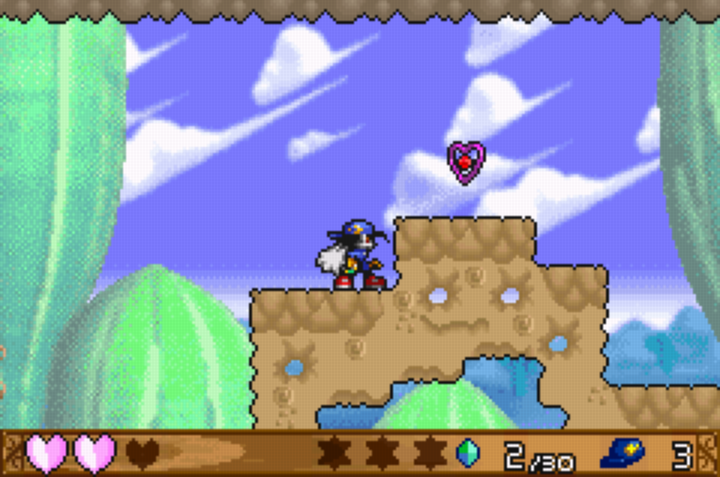
On the other hand, in the central part of the bottom bar are also the three star containers, and as already mentioned, they are filled with the stars that we collect after overcoming the puzzles of each stage.
Right next to this is a counter that represents the number of crystals that we have already collected, as well as the total amount of these that are scattered throughout the current scenario.
There are two types of crystals: green and blue crystals. The green ones are smaller, while the blue ones are bigger and worth more points than the first ones.

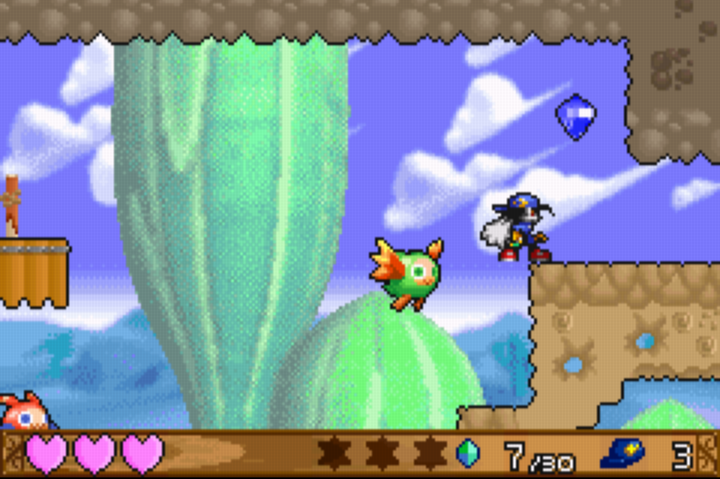
Finally, there are also the lives, which are represented by the icon in the form of a cap. If they reach zero then the game is over. The item that we must collect to increase the number of lives has the shape of a medal and is golden in color.
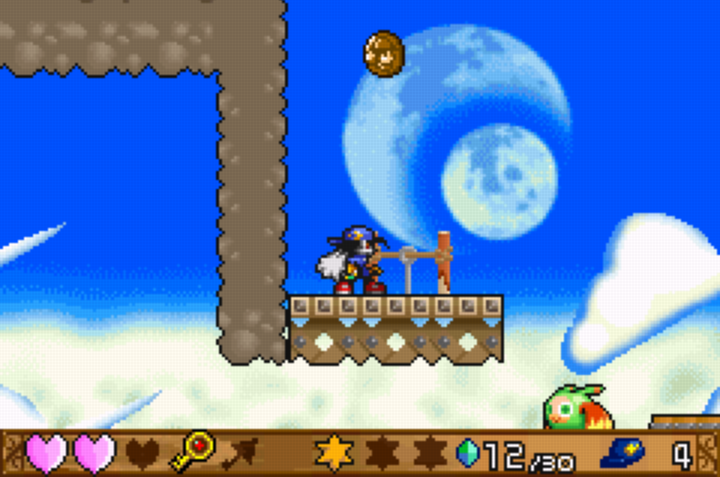
A great aspect of the game is that sometimes you can see some signs, which when you approach them and press the directional pad up will explain how to perform certain actions, such as the correct way to grab the boxes and how to use them to throw them from one side to another or how to propel yourself with them when jumping.
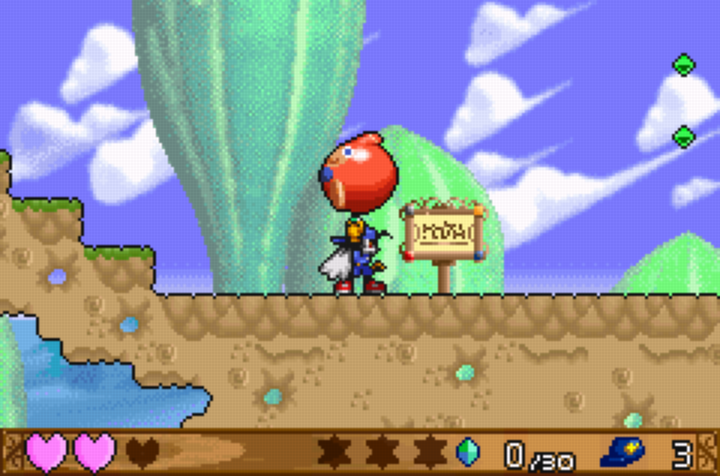
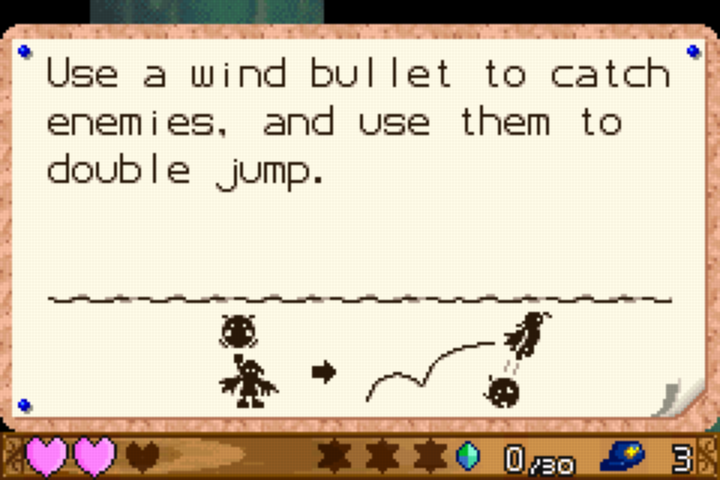
Graphics:
Klonoa: Empire of Dreams is practically a work of visual art, as you can tell that the designers managed to make the experience of playing in a dreamlike world a reality. The backgrounds are very well done; they are very colorful and also give a sense of depth.
In this same sense, each of the elements that make up the scenarios look spectacular, based on sprites exquisitely designed to look properly on a Game Boy Advance.
It is very easy to identify Klonoa, enemies, items and other objects that you can interact with throughout the game. In addition, the animations are very well done and are very fluid, as are the visual effects and transitions.
Sound:
Starting from my own point of view, I can say that this game has a wonderful soundtrack, which I assure you will hum for days or weeks, because each of the musical tracks is too catchy and pleasant.
In fact, the sound section of Klonoa: Empire of Dreams is an audible delight, since in addition to the songs, the sound effects are very good. Although the voices used for the main character stand out above the rest.
The latter are heard when Klonoa jumps, floats in the air, throws an object or when he receives damage in any way. This detail helps a lot to generate empathy towards the character and it is very cool to listen to them along with the music, as well as the other sound elements included in the game.
My rating: 9/10
Note: the rest of the images are screenshots taken by me using a Game Boy Advance emulator for Android.
[Español]
Introducción:
Durante la década de los 80 y 90 existía la posibilidad de probar una amplia variedad de juegos para las diversas consolas que se encontraban disponibles en el mercado para ese momento.
Estos artefactos electrónicos por razones obvias contaban con varias limitaciones, pero que aún así constituyeron un medio muy interesante y atractivo para muchas personas dispuestas a llevar su creatividad a niveles nunca antes imaginados.
Fue de esta manera que conocimos el estupendo "Súper Mario Bros." que se produjo para el NES o Famicon en 1985, considerado por buena parte de la comunidad como base fundamental para el origen del género de plataformas, tal y como lo conocemos actualmente.
No obstante, el genio creativo de Shigeru Miyamoto no era la única fuente de buenas ideas para videojuegos en aquella época, puesto que con el tiempo aparecieron otros entusiastas principalmente en Japón y luego en distintas partes del mundo.
Esto permitió que salieran a la luz títulos con una temática muy similar al primer Súper Mario y sus secuelas, donde el personaje principal debe recorrer escenarios de scroll lateral, mientras supera diversos obstáculos puestos en el camino por medio de saltos, o la interacción directa con ciertos objetos especiales.
Para entonces ya contábamos con propuestas como los títulos de Sonic el erizo para las consolas de SEGA, varios juegos de la saga Adventure Island, Ghost ‘n Goblins y hasta se sentaron las bases para lo que hoy conocemos como el género Metroidvania. Esto último gracias a la manera particular en que se jugaban los juegos de las sagas Metroid y Castlevania.
Dentro de este curioso contexto, la empresa Namco, recordada por muchos debido a que son los responsables de todo lo relacionado a la figura del ya legendario Pacman, dio la oportunidad a una propuesta que más tarde se convertiría en un verdadero deleite para los miles de fans adictos a los juegos de plataformas.
La idea consistía en desarrollar un título para la popular PSX o PlayStation 1 de Sony, estando protagonizado por una criatura antropomorfa y con un cierto parecido a un gato.
El título en cuestión fue inicialmente publicado en Japón en diciembre de 1997, siendo exportado un año después al resto del mundo bajo el nombre de "Klonoa: Door to Phantomile" y se centra en las aventuras de "Klonoa", un carismático héroe de buen corazón sobre quién se asegura es una especie de "viajero de los sueños".
La recepción del mismo parece haber sido bastante buena en el país del sol naciente, pues además de haber dado origen a una genial franquicia homónima, también fue recreado para poder funcionar y aprovechar las capacidades del Nintendo Wii y su más reciente sucesor, el Nintendo Switch.
Sin embargo, "Klonoa: Door to Phantomile" no es ni de lejos la única entrega destacada de toda la franquicia, pues existió una en la que sus desarrolladores decidieron llevar las cosas a un nivel muy diferente, pero conservando las características básicas que encumbraron a la saga. Así fue como lograron crear un juego de Klonoa mucho más adictivo e interesante que sus predecesores.
En esta oportunidad ningún sistema de Sony fue elegido para soportarlo, ya que la nueva propuesta fue diseñada especialmente para funcionar en el entorno de la versátil, y para entonces novedosa, Game Boy Advance. Una consola portátil más que ideal para el tipo de juego que el equipo detrás de Klonoa quería ofrecer a los consumidores.
Este salió al mercado por primera vez en julio de 2001 en un estreno inicial en donde solamente se tomó en cuenta al mercado japonés, por lo menos hasta que la gente de Infogrames lo llevó a Estados Unidos y a varios países del continente europeo.
Sobre el equipo encargado de su desarrollo se sabe que es bien conocido como Now Production o Nowpro, un estudio radicado en Osaka y que ya había colaborado con grandes compañías dentro de la industria de los videojuegos a lo largo de los años.
El juego fue publicado en occidente bajo el nombre de "Klonoa: Empire of Dreams" y en él podemos controlar a Klonoa, mientras recorremos diversos escenarios vistosos y muy coloridos resolviendo acertijos. Estos involucran a objetos específicos y hasta a los enemigos qué van apareciendo por unos portales.

fuente de las imágenes usadas para el gif
Gameplay:
Para ello nuestro héroe Klonoa cuenta con una habilidad especial que le permite dar grandes saltos y valerse de sus largas orejas para flotar un poco por el aire. De esta forma puede sortear mejor los obstáculos y llegar hasta áreas que estarían fuera del alcance de otros personajes de otras franquicias.
Aparte de lo anterior, Klonoa también cuenta con un artilugio conocido como "Wind Ring", el cual se supone es un anillo mágico o algo así capaz de manipular el aire y permitirle a Klonoa agarrar objetos pesados, así como también capturar a sus enemigos.

De esta forma puede llevarlos consigo para después usarlos como elemento de impulso para poder saltar más alto de lo habitual, o bien, arrojarlos como un arma.
Por su parte, la gran mayoría de los acertijos requieren el uso de cosas tales como cajas o agarrar a uno o varios enemigos consecutivos, al tiempo que van apareciendo otros elementos tales como unos globos rojos flotantes, cuerdas y diversos tipos de plataformas.

También se pueden recolectar vidas y unos cristales qué son como monedas, aparte de las llaves qué son usadas exclusivamente para abrir puertas que permiten al jugador desbloquear otras áreas para explorar y seguir resolviendo acertijos o para poder recolectar ítems ocultos.

Por otro lado, las estrellas constituyen la principal recompensa una vez que se han resuelto adecuadamente los acertijos, de modo que al conseguir las tres estrellas será posible abrir una puerta especial de color dorado. A través de ella se nos permitirá avanzar al siguiente escenario.

Pero antes de atravesar estas puertas es muy importante revisar si ya habíamos recolectado todos los ítems qué hay dentro del escenario actual, para así evitar tener que jugarlo de nuevo más tarde.

Por cierto, es una ventaja que el juego cuente con tres slots de guardado y batería interna, por lo que puedes estar tranquilo sabiendo que al apagar y prender tu consola podrás continuar el juego desde donde lo dejaste. Además, puedes prestarle el cartucho a algún familiar o amigo que también deseé probarlo para que guarde sus avances.

En cuanto a la historia, todo se puede resumir en que Klonoa estaba durmiendo plácidamente y de repente aparece en un mundo distinto donde está prohibido soñar, ya que así lo decidió el malvado emperador Jilius, quién sufre de insomnio.

Como castigo por su insolencia y negarse a obedecer, Klonoa es enviado a acabar con varios monstruos junto a su amigo Huepow. Por ello ambos deben recorrer todo el imperio hasta lograr cumplir con su nuevo objetivo.

Tras las cinemáticas animadas del inicio, se nos muestra lo que viene siendo el mapa principal. Allí es posible ver que hay 5 lugares distintos para explorar, siendo el primero de ellos "Ghazzaland" , mejor conocida como la "Ciudad de las Peleas" , donde solo la fuerza bruta es sinónimo de respeto.

Al elegir esta zona, se reproduce a continuación una cinemática donde nuestro héroe es recibido por varios lugareños, quienes proceden a golpearlo como una forma de saludo, al tiempo que le indican en donde se encuentra el monstruo que debe ser derrotado.

Entonces, aparece otro mapa donde se irán mostrando las "visiones" o escenarios que debemos superar, para luego poder hacerle frente al jefe del nivel. Estos mismos escenarios contienen acertijos qué van aumentando gradualmente su dificultad, lo que significa que vamos a estar un buen rato pensando hasta descifrar la mejor manera de resolverlos.

En la parte inferior derecha de la pantalla se encuentran tres contenedores de corazón. Estos se vacían cada vez que Klonoa hace contacto directo con un enemigo y sufre daño, aunque también sucede lo mismo si tocas las púas qué aparecen en el piso de algunos escenarios.

Para volver a llenar estos contenedores de corazón, solo hay que encontrar los ítems qué tienen forma de corazón, los cuales son muy escasos.

Por otro lado, en la parte central de la barra inferior están también los tres contenedores de estrella, y que como ya se dijo, se llenan con las estrellas qué recolectamos luego de superar los acertijos de cada escenario.
Justo al lado de lo anterior está un contador qué representa el número de cristales qué ya hemos recolectado, así como la cantidad total de estos que hay desperdigados a lo largo del escenario actual.
Sobre los cristales cabe señalar qué hay de dos tipos: los cristales verdes y los azules. Los verdes son más pequeños, mientras que los azules son más grandes y además valen más puntos que los primeros.


Finalmente, encontramos también ahí las vidas, qué son representadas con el icono en forma de gorra. Si estas llegan a cero entonces el juego habrá terminado. El ítem que debemos recolectar para aumentar el número de vidas tiene forma de medalla y es de color dorado.

Un aspecto genial del juego es que en ocasiones podrás ver unos letreros, qué al acercarte a ellos y presionar el pad direccional hacia arriba te explicarán como llevar a cabo ciertas acciones, tales como la forma correcta de agarrar las cajas y cómo servirte de ellas para arrojarlas de un lado a otro o como impulsarte con ellas a la hora de saltar.


Gráficos:
Klonoa: Empire of Dreams es prácticamente una obra de arte visual, pues se nota que los diseñadores lograron hacer realidad la experiencia de jugar en un mundo de características oníricas. Los fondos están muy bien hechos, son muy coloridos y dan también una sensación de profundidad.
En este mismo sentido, cada uno de los elementos que conforman los escenarios se ven espectaculares, basándose en sprites exquisitamente diseñados para verse de forma adecuada en una Game Boy Advance.
Es muy fácil identificar a Klonoa, a los enemigos, los ítems y demás objetos con los que se puede interactuar a lo largo del juego. Además, las animaciones están muy bien logradas y son muy fluidas, ocurriendo lo mismo con los efectos visuales o las transiciones.
Sonido:
Partiendo desde mi propio punto de vista, puedo decir que este juego tiene una banda sonara maravillosa, la cual te aseguro vas a tararear durante días o semanas, pues cada una de las pistas musicales son demasiado pegajosas y agradables.
En realidad, el apartado sonoro de Klonoa: Empire of Dreams es todo un deleite auditivo, ya que además de las canciones, los efectos de sonido son muy buenos. Aunque destacan por encima del resto las voces qué se usaron para el personaje principal.
Estas últimas se escuchan cuando Klonoa salta, flota en el aire, arroja un objeto o cuando recibe daño de alguna manera. Este detalle ayuda mucho a generar empatía hacia el personaje y es muy genial escucharlas junto a la música, al igual que los demás elementos sonoros qué se incluyeron dentro del juego.
An underrated classic!
I always love pixel art games. With that being said, I think I am going to try this one out.
Congratulations @babarois! You have completed the following achievement on the Hive blockchain And have been rewarded with New badge(s)
Your next payout target is 50 HP.
The unit is Hive Power equivalent because post and comment rewards can be split into HP and HBD
You can view your badges on your board and compare yourself to others in the Ranking
If you no longer want to receive notifications, reply to this comment with the word
STOPCheck out our last posts: